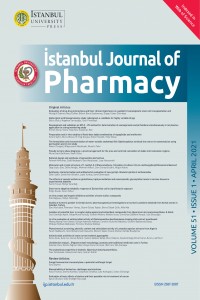Abstract
We are facing a significant challenge due to the tremendous rise in drug resistant fungal pathogen populations. The number of antifungal drugs is limited, as are the known targets they inhibit. The limited number of drugs and targets that have been successfully exploited in antifungal drug discovery is in part due to the eukaryotic nature of these organisms, which is shared with mammalian cells. An ideal antifungal substance is one that targets an indispensable pathway for pathogenic fungal survival that is not present in mammals or plants. Methionine is an essential amino acid for fungi and inhibition of its biosynthesis is deleterious for the pathogen. The biochemical pathways that produce methionine do not exist in mammals as they acquire it from their diet. Homoserine transacetylase, which catalyses the first committed step in methionine biosynthesis, therefore represents an attractive drug target. This enzyme is absent in mammals and unique to fungi and bacteria, suggesting that drugs targeting it would be of low toxicity, if any, to mammals, while having a lethal effect against the fungal pathogen. Homoserine transacetylase, based on its role in the production of methionine and its absence in mammals and plants could be a potential antifungal target.
References
- • Ashman, R. B., Farah, C. S., Wanasaengsakul, S., Hu, Y., Pang, G., & Clancy, R. L. (2004). Innate versus adaptive immunity in Candida albicans infection. Immunology and Cell Biology, 82(2), 196–204. https://doi.org/10.1046/j.0818-9641.2004.01217.x
- • Born, T. L., Franklin, M., & Blanchard, J. S. (2000). Enzyme-catalyzed acylation of homoserine: mechanistic characterization of the Haemophilus influenzae met2-encoded homoserine transacetylase. Biochemistry, 39(29), 8556–8564. https://doi.org/10.1021/ bi000462p
- • Chang, Y. L., Yu, S. J., Heitman, J., Wellington, M., & Chen, Y. L. (2017). New facets of antifungal therapy. Virulence, 8(2), 222–236. https://doi.org/10.1080/21505594.2016.1257457
- • Cleland W. W. (1977). Determining the chemical mechanisms of enzyme-catalyzed reactions by kinetic studies. Advances in Enzymology and Related Areas of Molecular Biology, 45, 273–387. https://doi.org/10.1002/9780470122907.ch4
- • Hollomon D. W. (1993). Resistance to azole fungicides in the field. Biochemical Society Transactions, 21(4), 1047–1051. https:// doi.org/10.1042/bst0211047
- • Low, C. Y., & Rotstein, C. (2011). Emerging fungal infections in immunocompromised patients. F1000 Medicine Reports, 3, 14. https://doi.org/10.3410/M3-14
- • Mazu, T. K., Bricker, B. A., Flores-Rozas, H., & Ablordeppey, S. Y. (2016). The Mechanistic Targets of Antifungal Agents: An Overview. Mini Reviews in Medicinal Chemistry, 16(7), 555–578. https:// doi.org/10.2174/1389557516666160118112103
- • Nazi, I., & Wright, G. D. (2005). Catalytic mechanism of fungal homoserine transacetylase. Biochemistry, 44(41), 13560–13566. https://doi.org/10.1021/bi0514764
- • Nazi, I., Scott, A., Sham, A., Rossi, L., Williamson, P. R., Kronstad, J. W., & Wright, G. D. (2007). Role of homoserine transacetylase as a new target for antifungal agents. Antimicrobial agents and chemotherapy, 51(5), 1731–1736. https://doi.org/10.1128/AAC.01400-06
- • Ollis, D. L., Cheah, E., Cygler, M., Dijkstra, B., Frolow, F., Franken, S. M., Schrag, J. (1992). The alpha/beta hydrolase fold. Protein Engineering, 5(3), 197–211. https://doi.org/10.1093/protein/5.3.197
- • Omura S., & Tanaka H. (1984). Production, structure, and antifungal activity of polyene macrolides, , In S. Omura (Ed.), Macrolide Antibiotics: Chemistry, Biology, and Practice (pp. 351–405). New York, USA: Academic Press.
- • Panackal, A. A., Gribskov, J. L., Staab, J. F., Kirby, K. A., Rinaldi, M., & Marr, K. A. (2006). Clinical significance of azole antifungal drug crossresistance in Candida glabrata. Journal of Clinical Microbiology, 44(5), 1740–1743. https://doi.org/10.1128/JCM.44.5.1740-1743.2006
- • Pfaller, M. A., & Diekema, D. J. (2007). Epidemiology of invasive candidiasis: a persistent public health problem. Clinical Microbiology Reviews, 20(1), 133–163. https://doi.org/10.1128/CMR.00029-06
- • Vandeputte, P., Larcher, G., Bergès, T., Renier, G., Chabasse, D., & Bouchara, J. P. (2005). Mechanisms of azole resistance in a clinical isolate of Candida tropicalis. Antimicrobial Agents and Chemotherapy, 49(11), 4608–4615. https://doi.org/10.1128/AAC.49.11.4608- 4615.2005
- • Warrilow, A. G., Nishimoto, A. T., Parker, J. E., Price, C. L., Flowers, S. A., Kelly, D. E., Kelly, S. L. (2019). The Evolution of Azole Resistance in Candida albicans Sterol 14α-Demethylase (CYP51) through Incremental Amino Acid Substitutions. Antimicrobial Agents and Chemotherapy, 63(5), e02586-18. https://doi.org/10.1128/ AAC.02586-18
- • Whaley, S. G., Berkow, E. L., Rybak, J. M., Nishimoto, A. T., Barker, K. S., & Rogers, P. D. (2016). Azole Antifungal Resistance in Candida albicans and Emerging Non-albicans Candida Species. Frontiers in Microbiology, 7, 2173. https://doi.org/10.3389/fmicb.2016.02173
- • Wyman, A., & Paulus, H. (1975). Purification and properties of homoserine transacetylase from Bacillus polymyxa. The Journal of Biological Chemistry, 250(10), 3897–3903.
- • Yamaguchi, H., Uchida, K., Hiratani, T., Nagate, T., Watanabe, N., & Omura, S. (1988). RI-331, a new antifungal antibiotic. Annals of the New York Academy of Sciences, 544, 188–190. https://doi. org/10.1111/j.1749-6632.1988.tb40403.x
- • Yamaki, H., Yamaguchi, M., Imamura, H., Suzuki, H., Nishimura, T., Saito, H., & Yamaguchi, H. (1990). The mechanism of antifungal action of (S)-2-amino-4-oxo-5-hydroxypentanoic acid, RI-331: the inhibition of homoserine dehydrogenase in Saccharomyces cerevisiae. Biochemical and Biophysical Research Communications, 168(2), 837–843. https://doi.org/10.1016/0006- 291x(90)92397-i
- • Zager R. A. (2000). Polyene antibiotics: relative degrees of in vitro cytotoxicity and potential effects on tubule phospholipid and ceramide content. American Journal of Kidney Diseases : the official journal of the National Kidney Foundation, 36(2), 238–249. https:// doi.org/10.1053/ajkd.2000.8967
Details
| Primary Language | English |
|---|---|
| Subjects | Pharmacology and Pharmaceutical Sciences, Health Care Administration |
| Journal Section | Review |
| Authors | |
| Publication Date | April 30, 2021 |
| Submission Date | July 19, 2020 |
| Published in Issue | Year 2021 Volume: 51 Issue: 1 |


